I've had such great success with my baker's cyst! It's really given me noticeable improvements. I'm very happy with the products, so now I've ordered the Back BFST.
Connie from New JerseyColdCure Leg | BFST Knee | Pre-Cut TapeJuly 15, 2022


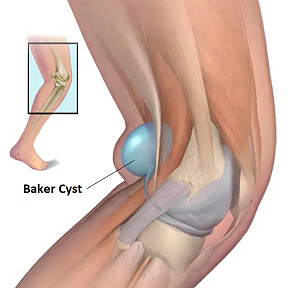
A Bakers Cyst is a term that is used to describe a build up of fluid in the back of the knee. Typically, people notice pain and a lump in the back of their knee. For some people, the lump isn't noticeable, just the pain. Others notice more lump and little pain. Both situations are a Baker's Cyst.
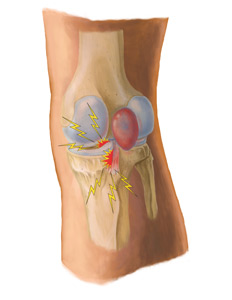
Sometimes you will hear the word "popliteal" when talking about a Bakers Cyst. "Popliteal" is just a medical term that generally refers to that empty space at the back of your knee - it's not an important term.
The fluid building up in your knee is collecting in a little sac called a "bursa". Your body has lots of bursae; their purpose is to hold 'excess' fluid around joints. Anytime any of these sacs get overfilled with fluid and swell up, we call it "bursitis". In your case, this sac in the back of your knee (the bursa in your popliteal) has a BIG buildup of fluid. This exact situation is so common it has a special name, a "Baker Cyst".
That 'fluid' we're talking about is called "synovial fluid". The interesting thing is that synovial fluid is not bad. Synovial fluid is really good for your knee, you just have a big build-up. Your body produces synovial fluid to keep your knee healthy. It lubricates the joints so the parts slide smoothly over one another. Think of it as a natural oil for your knee joint. Synovial fluid is a thick fluid. It fills the space between the parts in your knee, and acts as liquid padding or a shock absorber to reduce damage from sudden movements. There are sizable spaces in your joints where living tissue exists, like cartilage and bones, but you don't have blood in the area (like where bones meet). The synovial fluid feeds these cells by bringing what is needed from areas with blood supply. It also moves waste from the area back to your blood stream which is critical for your knee's health. That fluid is important and your body is producing it for a good reason.
Your body produces this fluid to keep your knee healthy. The inside of your knee, though, is constantly in motion and undergoing constant changes in load. With every step your whole body weight gets transferred off and onto your knee joint. The purpose of the bursa, the sac, is to provide a place for the fluid to escape to when the joint is under a lot of pressure. As the pressure subsides, the synovial fluid moves back into the joint from the bursa. Bursitis occurs (a bakers cyst when we're talking about the knee) when more fluid gets squeezed into the bursa than gets returned during the off-loading cycle. It's just a tiny, tiny, wee bit every time, but over time it builds up.
So why is this happening? It's happening because some other place in your knee - not in your bursa - there is some injured tissue. In response to that injury, your body is producing more and more synovial fluid to try to lubricate it, and cushion it, and nourish it, and clean away the dirt. It is because your inner knee injury hasn't healed for a long time that your body keeps producing more and more fluid to the point where the bursa becomes really big. As long as that inner injury doesn't heal, the problem will persist.
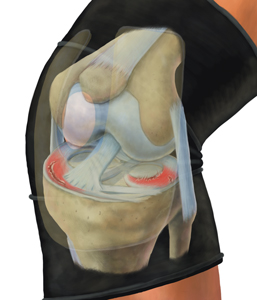
What is the underlying injury that is causing you to have a Baker's Cyst? Most people with a baker cyst don't realize their knee is actually injured. That's why they are looking for information on a baker cyst, instead of the real problem in their knee. This is very common. The most common underlying injury is a small meniscus tear. The meniscus is a piece of very tough tissue called cartilage between your two knee bones. It is a rubbing pad, a protector, between your knee bones so they don't actually rub on each other. You may have heard the term 'bone on bone'. Bone on bone is not a good thing which is why there is always cartilage between bones. Bones are separated where they would 'touch' by cartilage, and in your knee that sheet of cartilage is called your meniscus. Sometimes that meniscus get's a bit of a tear in it. Sometimes it just gets a bit frayed on the outsides. When the tear is significant you feel it in your knee long before a baker cyst develops. When the meniscus damage is minor though, you may not feel it. Your body produces more synovial fluid to help do all those good things for your meniscus that we discuss above. If your meniscus heals you never know there was a problem. But if your meniscus doesn't heal (typically because of small repetitive reinjury) your synovial fluid can build up to a point where a baker cyst develops.
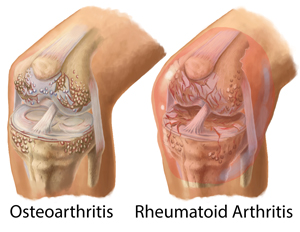
The next most common cause is Osteoarthritis. People often don't realize there are two kinds of Arthritis: Osteoarthritis and rheumatoid arthritis. Rheumatoid arthritis is the bad one because it's a disease-like condition and it is a problem that doesn't go away. But most arthritis is actually osteoarthritis which is a problem coming from overuse - overactivity in a joint. Osteoarthritis can go away if you let up on the activity and let the joint heal. Often, active people develop osteoarthritis in their joints that they don't even realize is there. And the body's response to osteoarthritis is, again, to start producing synovial fluid to help the joint heal. When it is mild enough that you don't notice it, but it persists for a long time, then that can cause a baker cyst to develop.
There are other much less common inner knee injuries that can result in a baker cyst. Suffice it to say that if some part of that knee has an injury that you don't know about and your body is trying to resolve it for a long time, a baker cyst can result.
A Bakers Cyst is going to last until your body successfully heals the underlying injury. By the time that swelling develops to the point that you notice it, you have probably had the injury for several months already. There's no doubt about it, something in your lifestyle is causing your injury to persist - your body can't heal the problem as fast as its getting reinjured. So, it is unlikely that it will just go away, unless you change something about your activity.
Some people get to this point and realize what may be the root cause. Perhaps it was an increase in activity level or a new activity. Perhaps it was that you have always maintained a fairly high activity level, but as you age or gain weight (we almost all do a bit with age), maybe your body can't keep up as well. In many, many cases, you did something once that caused you to have an injury in the moment, and it didn't have a chance to heal, and the injury has persisted ever since. That's the best scenario, because if that's the case, if you can allow your body to heal and get past that injury, you are likely to be able to return to the same activity level as before and never have the problem again. No matter what the cause, though, you have an underlying injury and you need to let it heal. If you heal your injury, regardless of the reason it started in the first place, your bakers cyst will go away and you will likely be able to resume normal life. That is, if this whole ordeal is dealt with properly...

The internet is full of bad advice about treating your knee. Here's a short list though: It's not your shoes. Draining it doesn't solve the underlying problem. Anti-inflammatories don't help - it's not that kind of swelling. Pain killers probably make it worse. Driving through the pain will just make it worse.
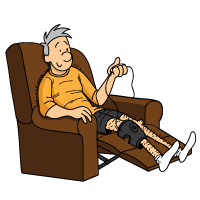
For a little while - not forever - it is really helpful to give your knee a rest. In many cases, resting your knee for a few weeks will give it time to heal to a point that your body gets ahead of the healing / reinjury cycle. It's important to realize that once the cyst goes away, your underlying injury may not be healed completely so take it easy and go back to regular life gradually once the pain and swelling are gone. If you want to be more proactive about healing the problem, you can click here to visit the Recommended Treatments page.
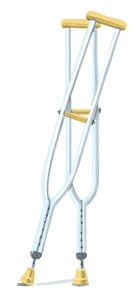
If you want your Baker's Cyst to go away as quickly as possible, you need to rest the affected knee. Avoid any physical activities that could cause further injury to your knee. If your Baker's Cyst developed from a knee injury or condition, do your best to avoid the activity that caused this knee injury or condition. Consider using crutches to keep the weight off your injured knee and avoid re-injury.
Do regular ColdCure® treatments to control the pain and swelling in the back of your knee. The compression during each treatment helps gently move the synovial fluid back into your knee from the bursa sac.
You can also focus on healing your underlying knee injury with regular BFST® treatments. This combination will work to finally get rid of your Baker's Cyst.
Around the 4-6 week mark you can start doing some light stretching and strengthening exercises. Slowly work your way back to your regular level of activity. Continue doing BFST® treatments long after the pain and lump disappear to maintain the healing you've done. Do a ColdCure® treatment if you experience any flare-ups of pain and swelling and after any significant activity.
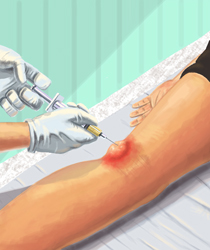
You don't have to undergo surgery in order to get rid of your Baker's Cyst. You can get rid of your Baker's Cyst with conservative treatments. However, it's possible that your underlying knee condition or injury requires surgery. These are very rare cases.
Meniscus surgery usually involves the removal of part of the meniscus and that is not what you want. That's a path to an eventual full knee replacement, it's just a temporary fix. You want to do everything you can to let your meniscus heal on its own.
Only in rare cases is it required for the Baker's Cyst to be drained or removed. If it's an option, you want to keep the synovial fluid and just move it back into your knee joint where it belongs, where it can help. In order to remove a Baker's Cyst, arthroscopic surgery must be performed.
If surgery is your only option, make sure your post-surgery recovery goes as smoothly as possible by using BFST and ColdCure. Use a ColdCure® Leg Wrap to reduce the inflammation and relieve the pain for the first few days following surgery. Once the inflammation has gone down, promote blood flow to the injured area using a BFST® Knee Wrap. This will improve your circulation and help you heal faster.
There is also a possibility that the Baker's Cyst could rupture, causing fluid to move into the calf and result in further swelling and pain in the calf. A ruptured cyst isn't great, but it's not the worst situation either. Until the underlying injury is dealt with, in some circumstances, it becomes difficult for the ruptured bursa to heal. You want a functional bursa to keep capturing the synovial fluid and return it back into your knee. Symptoms of a ruptured Baker's Cyst are similar to those of a blood clot, so if you're not certain that your Baker's Cyst has ruptured, please see your doctor.
Painkillers mask the pain, causing you to continue to stress and injure your knee. This will only make your condition worse. It is understandable that people need relief from the pain, so if you have to take painkillers, restrict them to times when you are off your feet. You can use painkillers to help you sleep. Using them when you are active is a recipe for permanent damage. Your choice of pain killers is important. You can give us a call to discuss which ones are best.
The ColdCure® Leg Wrap is designed to relieve the pain associated with Baker's Cysts. This safe and effective pain reliever is also great at bringing down swelling and inflammation. The ColdCure® Leg Wrap is incredibly soothing and provides support and protection for your Baker's Cyst. The painkilling element is incredibly powerful and it works instantly - there's no 20 minute wait like with pills.

Baker's Cysts can be extremely painful and debilitating. NSAIDs such as ASA, acetaminophen or ibuprofen are often used to treat the pain but these drugs do nothing to treat the actual condition. In fact, NSAIDs are known blood thinners and make the bleeding worse for fresh tissue injuries. Cortisone injections are used in extreme cases but these too are intended to address the pain. They do not promote healing of the injury itself and they put you at a very high risk of further injury.
You don't have to wait for endless months in pain. You can heal much more quickly with the right treatment. For a knee injury, blood flow is the most critical element in rapid recovery. Blood Flow Stimulation Therapy™ (BFST®) gives your knee the blood flow it needs to heal quickly and completely.
BFST® brings extra oxygen and nutrient-rich blood to the injured area - a requirement for the body to heal itself. Unfortunately, an injured knee at rest often has restricted blood flow, which extends your healing time and greatly increases the amount of scar tissue that develops. With a King Brand® BFST® Knee Wrap, blood flow can be stimulated in the area of injury while you are at rest. With improved blood flow and without physical activity and the risk of re-injury, you can recover from your knee injury at a surprisingly rapid rate.
I've had such great success with my baker's cyst! It's really given me noticeable improvements. I'm very happy with the products, so now I've ordered the Back BFST.
Connie from New JerseyColdCure Leg | BFST Knee | Pre-Cut TapeJuly 15, 2022

King Brand® soft tissue rehabilitation medical products are the #1 choice by top Athletic Therapists and Medical Practitioners worldwide. We provide guaranteed results and customer satisfaction. Like all King Brand® products, there simply isn't a better performing option. All King Brand® products come with a 100% satisfaction guarantee. Try our products and if you are not completely impressed, you can send them back for a full refund. We know you will love them though, because thousands of people already use them and rave about the results.
Click here to see our Customer Testimonials
King Brand® BFST® and ColdCure® Wraps are FDA Registered medical devices. They are intended to prevent, treat and cure soft tissue injuries and chronic conditions. Part of being an FDA Registered company means that our products are made from high quality, biocompatible materials. These devices are manufactured and tested to the highest safety standards in the industry.